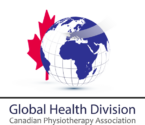Holistic approach in Pediatric Physiotherapy
While studies have shown that both multidisciplinary and interdisciplinary approaches to therapy that include speech, occupational, and physical therapy are highly effective in fostering children’s development and meeting their specific needs, what do multidisciplinary and interdisciplinary mean exactly, and what are the differences?
Multidisciplinary draws on knowledge from different disciplines but stays within their boundaries. In this approach, all disciplines share goals and work on the same issues, but each from their own area of expertise. Interdisciplinary differs in that this approach analyzes, synthesizes, and harmonizes between disciplines into a coordinated and coherent whole. The interdisciplinary approach relies on shared knowledge across different areas of expertise, and at times services are delivered by professionals without a formal background in that specialization area.
Ethiopia, with a population of over 120 million people, has a staggering lack of specialized professionals. The country only has about 550 physiotherapists and approximately 16 speech therapists available to serve the entire nation. While occupational therapy has recently begun to be offered at Gondar University, the program has not yet produced the first graduating class. Due to this significant overall shortage of expertise, an interdisciplinary approach in the Ethiopian context moves beyond being an approach that has been shown to be beneficial, as it is also essential to maximize the impact of available resources.
What about the concept of a holistic approach in pediatric physiotherapy? What does that mean and why is it important?
Overall, a holistic approach involves treating the whole person rather than just focusing on specific symptoms or conditions. Specific to physiotherapy, it considers not only the physical aspects of health but also the emotional, social, and environmental factors that can impact a person’s well-being. This approach aims to address the root causes of issues and promote overall wellness and quality of life. Holistic physiotherapy recognizes that the body is interconnected, and that issues in one area can affect other areas as well. By taking into account the broader context of a patient’s life, physiotherapists can develop more personalized and effective treatment plans.
I currently work as a pediatric physiotherapist at a rehabilitation center in Ethiopia called Addis Guzo (which translates to ‘New Journey’ in English ). Addis Guzo is a small Swiss-based NGO working with and for people with disabilities in Ethiopia. All services are provided free of charge to our beneficiaries. We are a multisectoral organization providing 600 – 700 high quality and customized wheelchairs per year (making it the highest consistent wheelchair provider in the country), skills development training in micro enterprises for women with physical disabilities, wheelchair basketball and contemporary dance for people with disabilities. Specific to my work, our organization is known for pioneering an Ethiopian context based early intervention program (2-5 year olds) which goes beyond traditional physiotherapy to integrate into our practice adaptive play, functional communication, and behavioral support among other areas of skills development. Our center is proud to be at the forefront of pediatric rehabilitation as we have implemented a pioneering approach that employs a holistic methodology to treat children under two years of age in a group setting. This approach is intentionally designed to address the unique needs of our youngest patients, considering the interconnectedness of their physical, emotional, and social development.
Today, I want to discuss how specifically utilizing an interdisciplinary and holistic approach changed the life of one young boy.
Let me introduce you to the resilient and determined Amare Mukerim, a 6-year-old boy whose cerebral palsy affects his motor function and communication. Amare is the middle child of three boys and has loving parents who tirelessly sought speech and physiotherapy services at governmental hospitals, the standard option available to families in Ethiopia. Even with endless persistence, their efforts did not result in Amare getting the services that he needed.
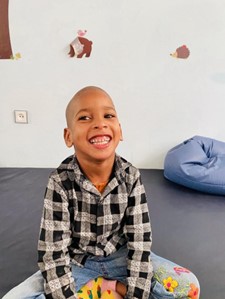
In December 2022, Amare joined Addis Guzo’s pediatric physiotherapy program. During baseline assessment, he was able to sit, stand, and walk without support, but lacked dynamic balance which led him to frequently fall down. He also experienced difficulty with fine motor activities, such as holding a writing implement, and had highly limited speech and communication skills with a mismatch between his receptive capacity and expressive output (he could vocalize a few words and had several custom signs that only his family could understand).
In the fall of 2022, Amare was excited to start school. However, the reality of school life was far from what he had expected. His peers treated him differently, which made him a target for ridicule and bullying. The hurtful comments and actions of his classmates had a profoundly negative impact on Amare. Despite the best efforts of his parents and teachers, who tried to reassure him and create a safe environment for him, after attending for only a short period of time, Amare refused to return to school.
Because we use an interdisciplinary approach, upon recognizing his potential and strong communicative intent, and with the guidance and support of a mentor from the US who has a background in functional communication, I developed and implemented a multi-layered approach to address his communication needs:
- Spoken Language: An assessment was done of his current spoken vocabulary. Because Amare has limited sounds he can make clearly, specific words that he could pronounce with the greatest clarity and that had the most functionality were targeted for spoken output (for example counting to 5 in Amharic was replaced with vocalizing his name)
- Augmentative and Alternative Communication
- Sign Language: An assessment was done of his current signed vocabulary. Because of his fine motor limitations, specific words that he could most clearly make a physical representation of and that had the most functionality were targeted (for example, “finished” and “help”).
- Print based pictures/words: Using photographs and line drawing, a communication sheet, communication book, and emergency card were developed for Amare to use in different settings. As examples, he wears the emergency card on his pants loop to indicate if he needs help, and a single communication page is kept in his backpack and used at school to show unfamiliar people what each of his signs means. Multiple revisions and adjustments were made to ensure each printed item was as easy as possible for Amare to access and for others to understand what the pictures/words mean.
- Voice output device: Amare did a trial on the Ablenet Quicktalker Feather Touch 12 but it was quickly apparent that managing the sheets for the different levels was difficult for him and as he had the capacity to use a higher level voice output device, Addis Guzo secured a donation of a tablet which was programmed using GoTalk NOW. Amare independently navigates between pages on the tablet and uses the device daily to communicate in a range of ways (ex. commenting about his day, asking to play with his brothers, etc.)
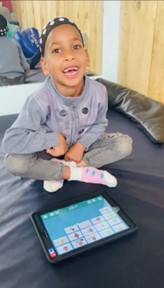
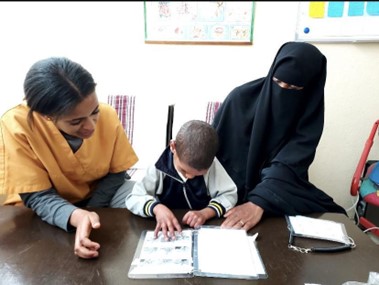
Using an interdisciplinary and holistic treatment approach led to implementing comprehensive services, which resulted in remarkable improvement across different areas of need for Amare, specifically significant improvements in both his physical abilities and communication skills. Amare continued with his physiotherapy treatment, and is now able to walk and run confidently without falling down, to include on uneven surfaces. He is able to hold crayons and is beginning to print letters. He now communicates using whichever output best matches his needs and the situation. With ongoing guidance and support, Amare’s parents have been active participants, feeling empowered and confident enough to make adjustments as needed to the voice output program on his tablet and to perform his physio exercises with great precision.
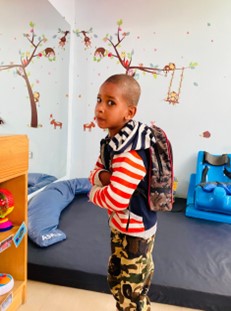
With his increased motor capabilities, and a range of methods to communicate, Amare returned to school in September 2023. Although there are still challenges, he is now able to communicate with his teachers and peers. Overall, Amare’s journey serves as an inspiring example of the transformative power of interdisciplinary and holistic care in creating lasting positive outcomes in pediatric physiotherapy.
Eden Andom Woldetinsae is a pediatric physiotherapist based in Addis Ababa, Ethiopia. She currently is the president at the Ethiopian Pediatric Physiotherapy Group. In the fall of 2024 she will embark on a research-based Master’s Program in Health and Rehabilitation Science at Western University, London Ontario. Eden is thrilled about this opportunity as there are no specialized pediatric physiotherapy study programs available in Ethiopia. She is actively seeking grants and scholarships to support tuition and expenses and would appreciate hearing from you if you know of possibilities for her to explore. Eden can best be reached at: edenandom746@gmail.com.
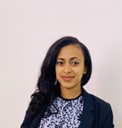
Please check out Addis Guzo’s website and learn more about how you can support pediatric physiotherapy in Ethiopia: https://addisguzo.com/
Become a member
LoginBecome a member
Login